Islam in the Philippines dates back to the 14th century. This rich and diverse tradition was shaped by the convergence of Arab, Gujarati, and Malay influences with indigenous cultures.
Today, approximately 6.4% of the population identifies as Muslim, with significant communities in Mindanao, Palawan, and the Sulu Archipelago.
The cultural heritage is evident in sites like the Maradika Quran, which showcases the blending of Islamic and local traditions.
Various Islamic schools of thought coexist alongside unique ethnolinguistic groups, such as the Tausug and Maguindanao. For instance, the Tausug people have a distinct culture that combines Islamic practices with their own customs and traditions.
The history of Islam in the Philippines is woven from historical roots, cultural practices, and political struggles. Understanding these complex dynamics is crucial to uncovering the rich tapestry of Islamic traditions in the country.
There is still much more to discover, as the story of Islam in the Philippines continues to evolve and grow.
Historical Roots of Islam
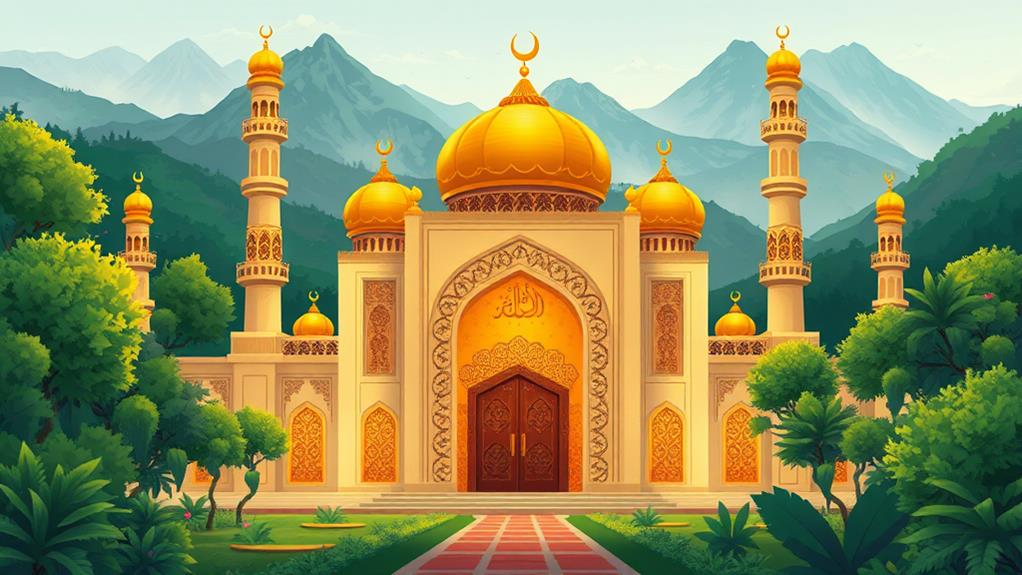
Islam's Roots in the Philippines Date Back to the 14th Century
Islam was first introduced to the Philippines in the 14th century by Arab and Gujarati traders.
The first mosque was established in 1380 in Simunul, Mindanao, marking the beginning of Islamic presence in the region.
The Sultanate of Sulu and Maguindanao
By the 15th century, the Sultanate of Sulu was established, becoming a significant Islamic authority in the region, with its first Sultan being Sayyid Al-Hashim Abu Bakr.
Most of Jolo/Sulu had converted to Islam, and the Sultanate of Maguindanao was founded around 1515, further solidifying Islamic governance in Mindanao.
Colonial Struggles and the Term "Moro"
The arrival of the Spanish in 1565 marked the beginning of colonial struggles against the Muslim territories, as they faced significant resistance from local datus and leaders like Rajah Sulayman.
The term "Moro" was initially used derogatorily by the Spanish to refer to Muslims, but it has been reclaimed by Philippine Muslims, signifying their identity and cultural heritage.
Demographics and Population Growth
6.4% of the Philippine population identifies as Muslim, totaling approximately 6.98 million Filipinos. This number has increased from 6.0% in the 2015 census, according to the 2020 census. The National Commission on Muslim Filipinos estimates the Muslim population to be around 11%.
The Bangsamoro region has the highest concentration of Muslims, with 91% of its 4.9 million residents identifying as Muslim. Other predominantly Muslim ethnolinguistic groups in the Philippines include Iranun, Maguindanao, Maranao, Tausug, and Yakan, with significant communities in urban areas like Zamboanga City and Manila.
The Muslim population in the National Capital Region has a growth rate that surpasses the national average, standing at 1.29%. This indicates a trend of increasing Muslim presence in various regions.
Mindanao remains a hub for Muslim communities, with a significant concentration of Muslim populations in the region.
Cultural Heritage and Practices
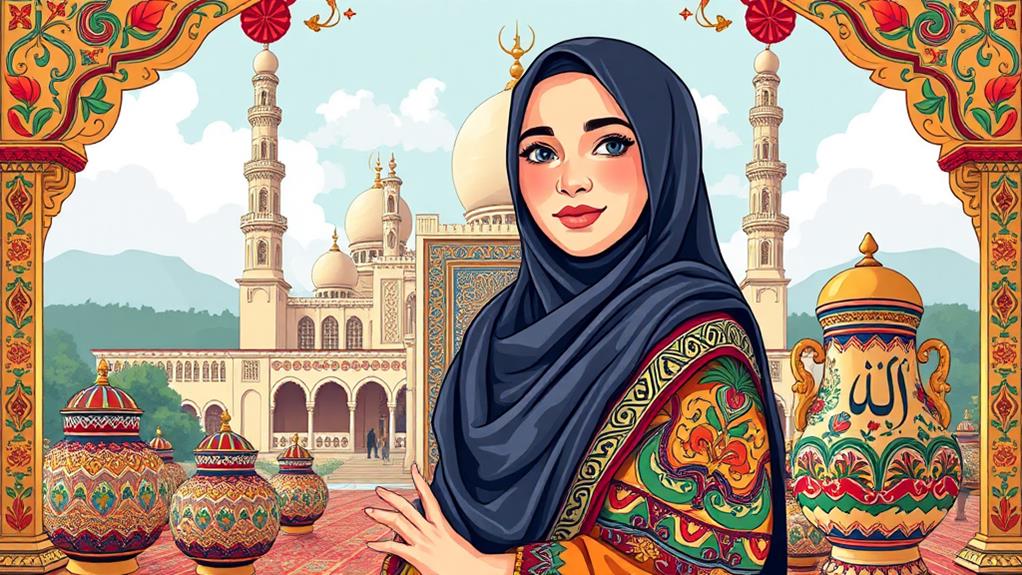
Islamic Cultural Heritage in the Philippines
The Philippines is home to a rich Islamic cultural heritage, with historical significance evident in sites like the Maradika Quran of Bayang, a National Cultural Treasure since 2014. This ancient Quran showcases the importance of Islamic texts in Filipino history.
Diverse Islamic Schools of Thought
In the Philippines, various Islamic schools of thought coexist, including Sufism, Shiism, and Sunni traditions.
Sufism is particularly influential, with key centers like the Darul Abdulqadir Jilani Dergah.
Islamic Traditions and Cultural Practices
The cultural practices of predominantly Muslim ethnolinguistic groups, such as the Maranao and Tausug, are deeply intertwined with Islamic traditions.
These traditions influence their social customs, celebrations, and artistic expressions.
Festivals and Community Gatherings
Festivals and community gatherings, like Eid al-Fitr, play a crucial role in the social life of Muslim Filipinos.
These events reinforce communal bonds and cultural identity among diverse Muslim groups across the archipelago.
Political and Social Dynamics
Political and Social Dynamics in Muslim Life in the Philippines
The Bangsamoro Autonomous Region in Muslim Mindanao (BARMM)
The establishment of the Bangsamoro Autonomous Region in Muslim Mindanao (BARMM) in 2019 is a significant milestone in the history of Muslim Filipinos.
This move grants political autonomy to the region's Muslim-majority provinces, acknowledging the historical struggles of Muslim Filipinos who've faced socio-economic marginalization and political neglect.
Drivers of Autonomy
The BARMM's creation is a response to the Moro National Liberation Front's (MNLF) long-standing demands for autonomy and self-governance.
This demand stems from the region's strong Islamic demographic presence, with a 91% Muslim population, which underscores the need for inclusive governance and recognition of Muslim culture.
Historical Conflicts and Challenges
Historical conflicts, such as the 1970s clashes between the MNLF and government forces, stem from socio-economic marginalization and political neglect of Muslim communities.
The emergence of extremist groups, such as the Abu Sayyaf Group, highlights the ongoing challenges and complexities in the region, emphasizing the need for sustained efforts towards peace and development.
External Influences and Movements
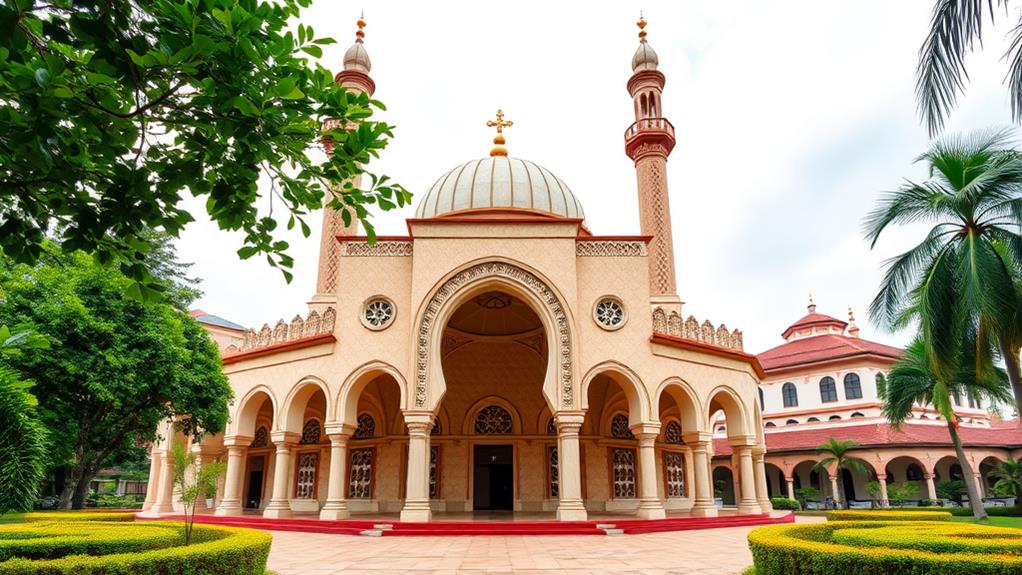
Early Trade Interactions Shaped the Spread of Islam in the Philippines
The 14th-century trade interactions with Arab and Gujarati traders laid the groundwork for the spread of Islam in the Philippines. These interactions led to the establishment of initial Muslim communities that would eventually flourish.
The Sulu Archipelago became a hub of Islamic learning and culture as a result of these early interactions.
Chinese Muslim Mariner Zheng He Facilitated Cultural Exchange
The voyages of Chinese Muslim mariner Zheng He during the Ming dynasty facilitated cultural exchange, contributing to the establishment of Muslim communities in the region.
This exchange had a significant impact on the development of Islam in the Philippines.
External Influences Shaped the Trajectory of Islam in the Philippines
Bruneian influence in the 15th century led to the establishment of alliances and the exertion of control over local powers, impacting the political landscape and Muslim identity in the region.
This influence shaped the trajectory of Islam in the Philippines, affecting the way Muslim Filipinos practiced their faith.
Modern Movements Promoted a Return to Islamic Principles
Modern movements such as the Nurcu and Hizmet have promoted a return to Islamic principles and interfaith dialogue, emphasizing community service and educational excellence within Muslim communities.
These movements have contributed to the rich tapestry of Islam in the Philippines, shaping the identity and practices of Muslim Filipinos today.
Muslim Rebellions and Conflicts
Muslim Rebellions and Conflicts in the Philippines
The Root of the Conflict
In 1969, Muslim-led rebellions began in the Philippines as a response to government neglect and marginalization of the Muslim population. The conflict escalated in the mid-1970s between the Moro National Liberation Front (MNLF) and government forces, resulting in significant violence and loss of life.
Socio-Economic Factors
Poverty rates exceeding 70% in predominantly Muslim areas contribute to the persistence of these rebellions and conflicts. These socio-economic conditions fuel the ongoing unrest.
Peace Agreements and Emerging Groups
A peace agreement was reached with the MNLF in 1996, but it failed to resolve ongoing conflicts. This led to the emergence of other groups like the Moro Islamic Liberation Front (MILF) and the Abu Sayyaf Group (ASG).
Government Initiatives
Government initiatives have aimed to promote Islam as part of the national heritage while addressing the historical grievances and socio-economic disparities faced by Muslim communities in Mindanao.
Consequences of the Conflict
The ongoing conflicts have led to the displacement of thousands of Muslim Filipinos, who continue to face significant challenges in accessing basic services and opportunities.
Islamic Schools of Thought
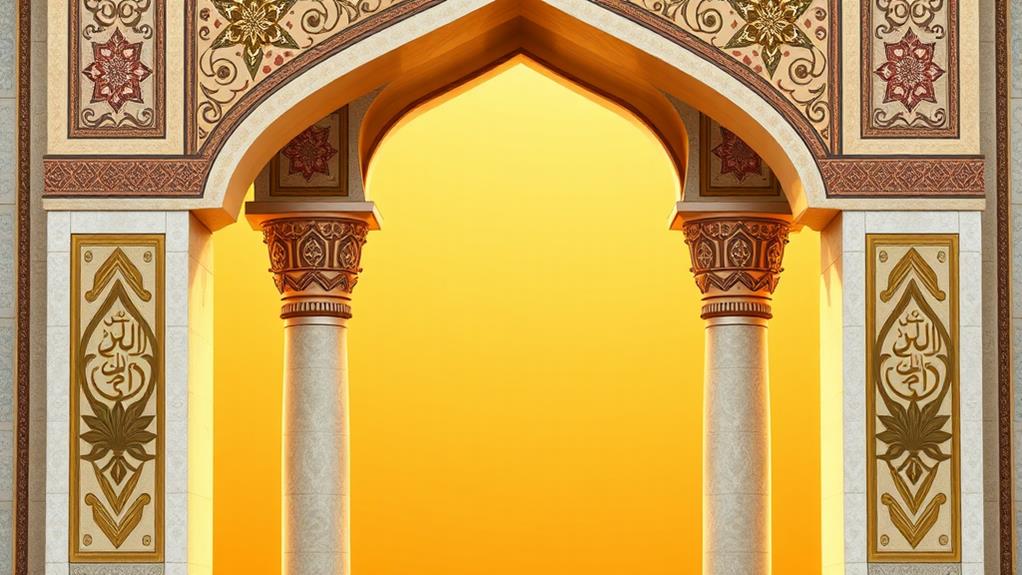
Islamic Schools of Thought in the Philippines
Diverse Traditions
The Islamic landscape in the Philippines is characterized by diverse schools of thought, reflecting the country's rich cultural heritage and historical influences.
Sunni Islam is the most widely practiced, coexisting with Sufism, Shiism, and Salafism, each contributing to a nuanced theological landscape.
Sufism
Introduced by early missionaries, Sufism has established centers like the Darul Abdulqadir Jilani Dergah and Maharlika Blue Mosque, promoting a mystical approach to Islam.
These centers focus on spiritual growth and self-purification, emphasizing the importance of a direct, personal experience of God.
Sunni Theology
Mainstream Sunni theology is represented by the Ashari and Maturidi schools, which emphasize rationality and tradition in understanding Islamic teachings.
These schools of thought provide a framework for interpreting Islamic principles and practices.
Tablighi Jamaat
The Tablighi Jamaat movement focuses on community engagement and revitalizing Islamic practices, encouraging Muslims to return to the teachings of the Quran and the Hadith.
This movement has gained traction among Filipino Muslims, promoting a sense of community and social responsibility.
Ahmadiyya Community
The Ahmadiyya community advocates for community service and interfaith dialogue, despite facing challenges due to its distinct beliefs about prophethood.
This community emphasizes the importance of education, healthcare, and social welfare, while promoting peaceful coexistence with other faiths.
Cultural Identity and Diversity
The Philippines' cultural identity is shaped by a blend of Western colonial legacy, Catholic traditions, and Islamic heritage.
The country's cultural narrative is complex, with these influences intertwined.
The Philippines is home to approximately 6.4% of Muslims, with significant populations residing in Mindanao, Palawan, and the Sulu Archipelago. This reflects the nation's multicultural identity.
Muslim Filipinos have distinct ethnolinguistic groups, each contributing to the country's Islamic heritage.
These groups include:
The Iranun, known for their seafaring traditions and expertise in boat-building. They're skilled craftsmen who've passed down their knowledge through generations.
The Maguindanao, who've a strong tradition of storytelling and oral history. Their stories have been shared through generations, preserving their cultural heritage.
The Maranao, recognized for their skill in weaving and textile production. Their intricate weavings are a testament to their craftsmanship and attention to detail.
The Tausug, who are known for their expertise in traditional medicine and healing practices. They've developed unique remedies and treatments that are still used today.
These groups showcase the diversity within the Muslim Filipino community, each contributing to the rich tapestry of Islamic heritage in the Philippines.
How has Islam influenced or interacted with indigenous religions in the Philippines?
Islam has interacted with indigenous religions in the philippines for centuries. Islamic traders and missionaries brought their faith to the archipelago, where it merged with local beliefs. Today, many Filipino Muslims integrate elements of indigenous religions into their Islamic practices, creating a unique blend of spirituality.
Artistic Expressions and Traditions
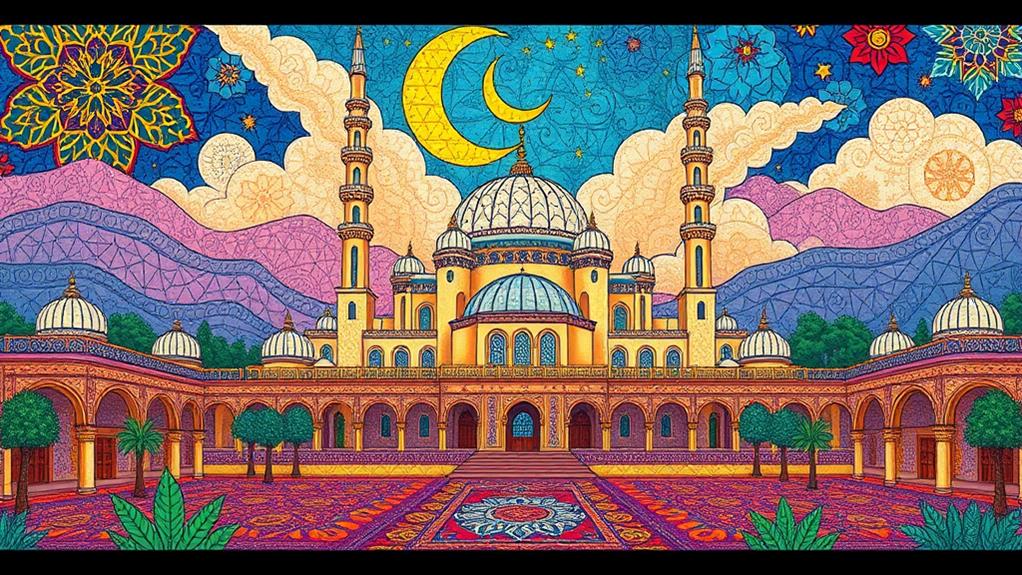
Artistic Expressions and Traditions in the Philippines
The cultural identity of the Philippines is deeply rooted in its artistic expressions and traditions, which play a vital role in shaping the nation's rich heritage.
Traditional musical forms, such as the kulintang ensemble, are an integral part of Muslim communities in the Philippines. This unique ensemble features a series of gongs played in intricate melodies, reflecting the nation's diverse cultural identity.
In the visual arts, prominent Filipino painters like Juan Luna and Fernando Amorsolo have made significant contributions to the national identity, depicting everyday life and historical events through their artworks.
The performing arts continue to thrive through contemporary groups that reinterpret traditional dance forms, preserving cultural heritage and promoting unity.
Festivals like Eid al-Fitr and local celebrations showcase a blend of religious and cultural traditions, with music, dance, and visual arts playing vital roles in community engagement and cultural pride.
These artistic expressions and traditions have contributed significantly to the Philippines' rich artistic heritage, reflecting the nation's diverse cultural identity and Muslim communities' unique cultural expression.
Frequently Asked Questions
What Kind of Islam Is in the Philippines?
The Philippines is home to diverse Islamic practices. The majority of Muslims in the Philippines practice Sunni Islam, which adheres to Sharia Law.
Sufi influence is also present, focusing on spiritual practices and community engagement. This blending of Islamic practices with local traditions promotes interfaith dialogue.
For example, Islamic festivals are celebrated alongside local customs, demonstrating the country's rich cultural heritage.
Mindanao is home to a thriving Muslim community, showcasing the diverse tapestry of Islamic identity in the region.
What Is the Cultural Diversity of the Philippines?
The Philippines is home to a rich cultural diversity, comprising over 175 ethnic groups. These groups contribute to the country's cultural tapestry through their unique practices, languages, and traditional arts, reflecting the nation's indigenous beliefs and history.
The country's cultural practices are a kaleidoscope of traditions, with influences from its history. For example, the Ifugao people are known for their traditional rice terraces, while the T'boli people are skilled in weaving traditional fabrics.
The Philippines is also a melting pot of languages, with over 180 languages spoken across the country. Major languages such as Tagalog, Cebuano, and Ilocano are widely spoken, while regional languages like Bikol and Hiligaynon are also prominent.
The nation's culinary diversity is a reflection of its cultural heritage, with dishes influenced by Spanish, Chinese, and Malay cuisines. Examples of popular dishes include adobo, a savory stew, and sinigang, a sour soup.
Community celebrations are an integral part of Filipino culture, showcasing the nation's festive spirit.
The Sinulog Festival, held in Cebu, is a popular celebration that honors the Santo Niño, while the MassKara Festival, held in Bacolod, is a colorful celebration that showcases the city's vibrant culture.
What Made the Islamic World Rich Diverse and Creative?
The Islamic world is rich in cultural diversity and creativity. This diversity is reflected in its unique aesthetic, which combines intricate patterns and calligraphy in Islamic art. For example, the Alhambra palace in Spain and the Taj Mahal in India showcase this distinctive style.
Trade networks played a crucial role in facilitating intellectual exchange and innovation. These networks allowed for the exchange of goods and ideas between different regions, leading to significant advancements in fields like mathematics, astronomy, and medicine.
For instance, the Silk Road, a major trade route, connected the Islamic world to Europe and Asia, enabling the exchange of knowledge and goods.
The Islamic world boasts an impressive architectural heritage. Mosques, palaces, and other buildings demonstrate grandeur and exceptional craftsmanship.
The architecture of the Mosque of Omar in Jerusalem, with its stunning dome and arches, is a prime example of this heritage.
Spiritual practices, culinary traditions, and social structures all contribute to the rich cultural tapestry. Spiritual practices, such as the Five Pillars of Islam, unite Muslims worldwide.
Culinary traditions, like the use of aromatic spices and sweet pastries, vary across regions but share a common Islamic identity.
Social structures, including family and community ties, are also shaped by Islamic values and principles.
What Is the History of Muslims in the Philippines?
The history of Muslims in the Philippines dates back to the 14th century when Arab and Gujarati traders migrated to the region, introducing Islam.
These early Muslims established historical kingdoms, including the Sultanate of Sulu and Maguindanao, which resisted Spanish colonization's attempts to erase their identity.
These kingdoms maintained their independence and cultural heritage despite facing colonization.
Today, modern conflicts and discrimination persist, affecting cultural contributions, religious practices, and educational institutions.
Despite these challenges, Muslim communities continue to thrive, enriching the country's diverse fabric.